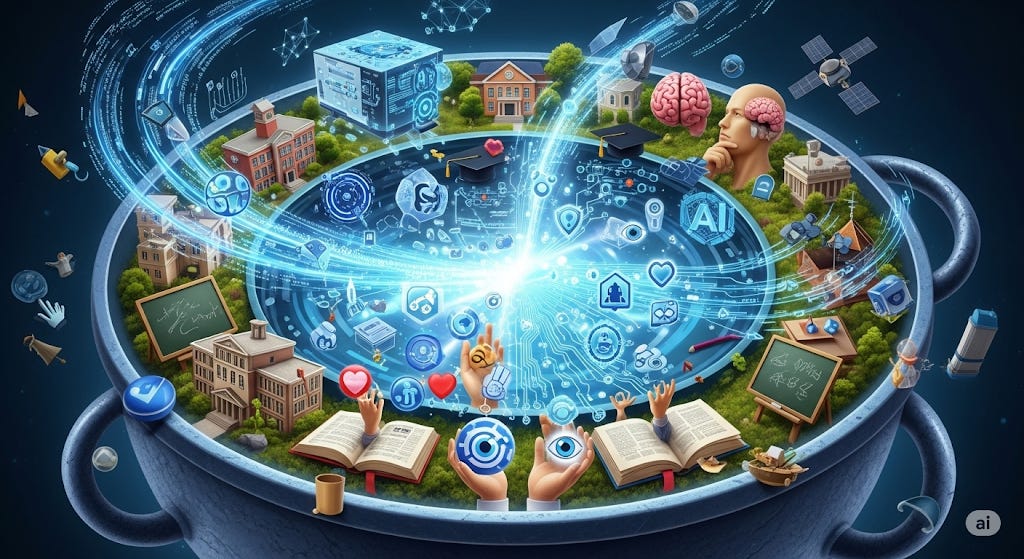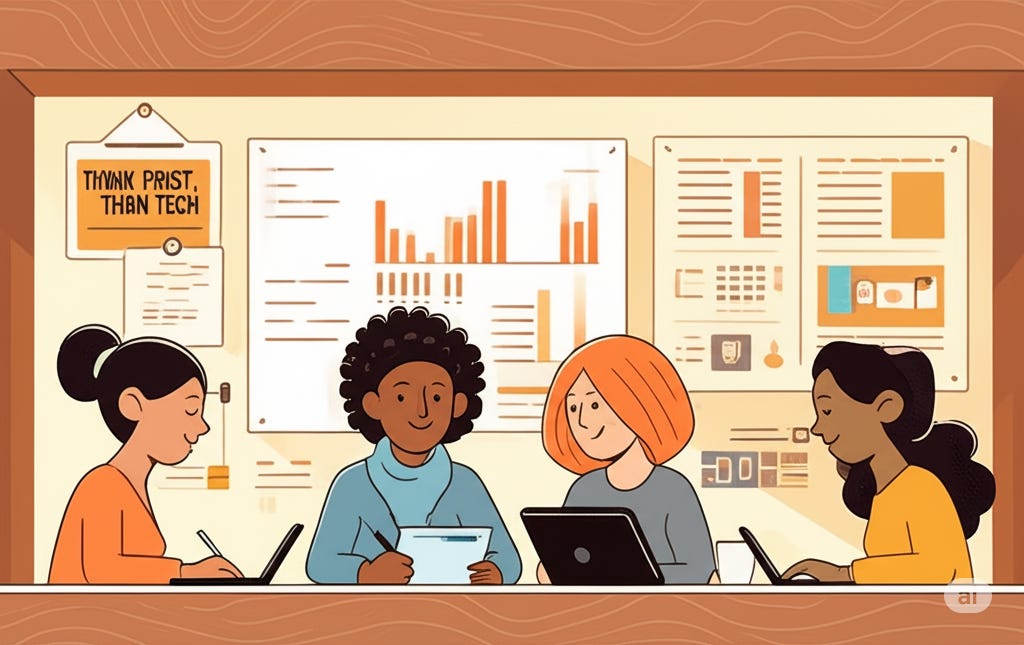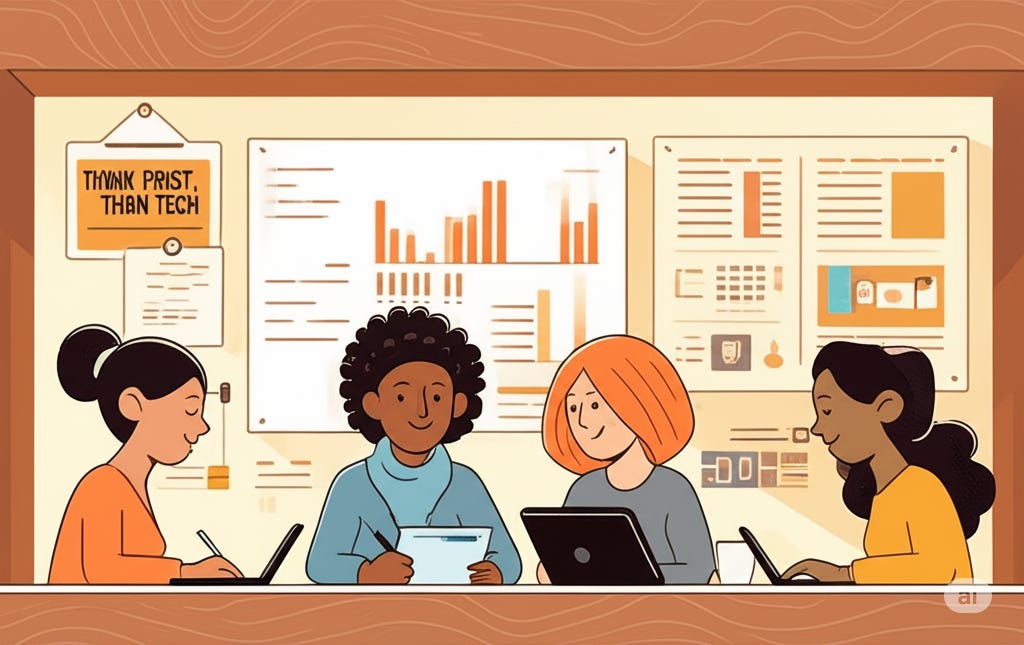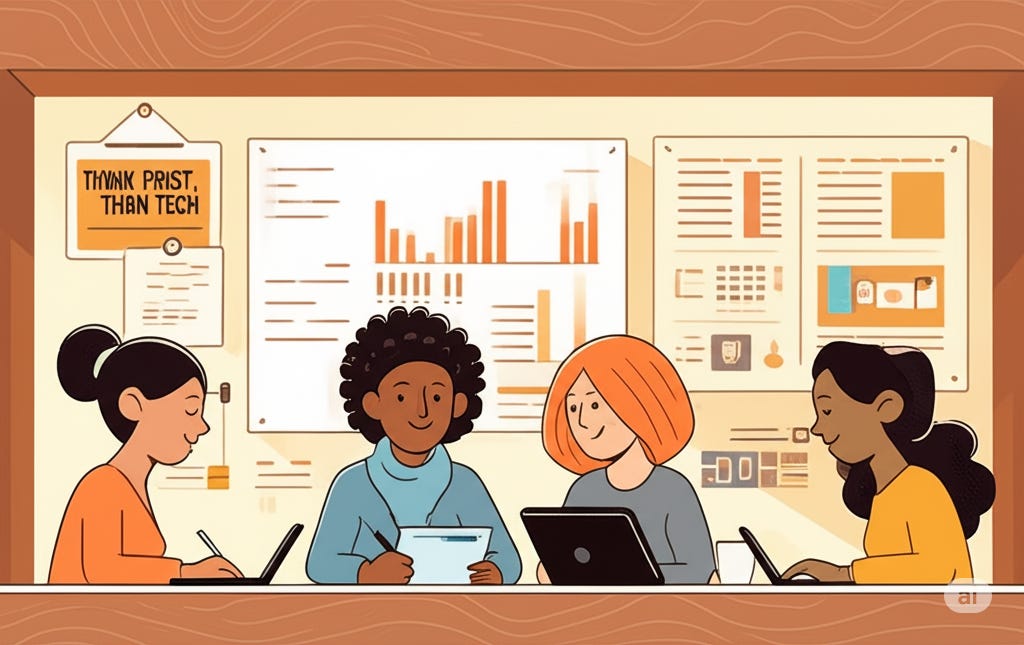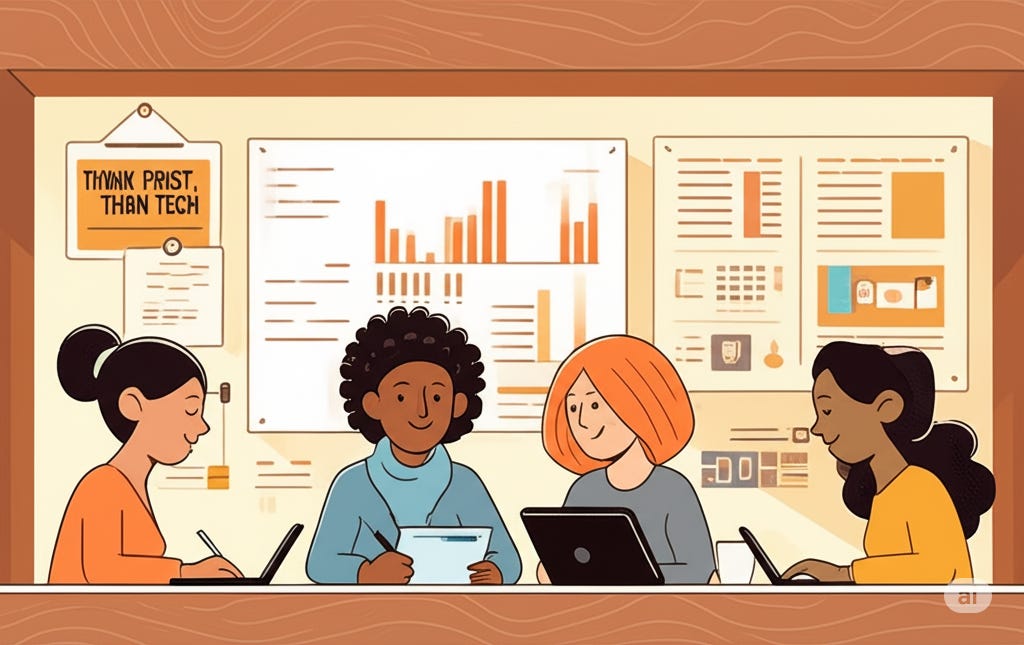From Snapshot to Strategy | Rethinking EdTech Integration
From models to meaning: 5 Essays reframing EdTech by building the bridge between practice and policy.
The integration of educational technology is no longer a question of access or tools. It is a matter of alignment, coherence, and long-term strategy.
This mini-series presents five research-informed articles designed to challenge the way we think about EdTech in schools; not simply through adoption or implementation, but through reflection, infrastructure, and purpose.
Each essay stands alone, but together, they sketch a bigger picture offering a more sustainable, thoughtful, and purpose-driven approach to technology integration.
The aim here is not to endorse particular tools or trends, but to create space for deeper questions about purpose, process, and outcomes.
Whether you're a school leader, policy thinker, classroom educator, or systems strategist, these essays should be useful. They're short and grounded in evidence. They ask better questions, not just about what tech we use, but why, how, and to what end.
The intent is to drive thoughtful discourse about why we do what we do, and how to improve processes.
Explore the Full Strategy Series:
These ideas are expanded in the full strategic series “Why EdTech Strategy Is Failing” (coming soon).
The Essays
1. Why Snapshots Fail
Rethinking Classroom EdTech Integration
Learning isn’t a moment. So why are we evaluating like it is?
Checklists and observations offer metrics, but often miss the nuance of real integration. Evaluation should capture ongoing stories, not isolated scenes.
2. Frameworks Are Lenses, Not Ladders
Climbing the SAMR ladder? Maybe it’s time to wade into deeper waters.
Frameworks like SAMR and TPACK are perspectives, not hierarchies. When models become compliance tools, they risk constraining reflection instead of supporting it.
No.2 of 5. Frameworks Are Lenses, Not Ladders
SAMR. TPACK. TIM. PIC-RAT. Frameworks have become the dominant language of EdTech. But too often, they’re used not to support thinking, but to shortcut it.
3. Strategy Isn’t a Shopping List
You can’t buy alignment. You build it.
Procurement is not strategy. True integration connects vision to infrastructure and policy to practice. Ireland’s national plan offers one instructive example.
No.3 of 5. Strategy Isn’t a Shopping List: Rethinking Alignment in EdTech
Strategy Isn’t a Shopping List: Rethinking Alignment in EdTech
4. The Illusion of Impact | Outputs Are Not Outcomes
Engagement metrics may comfort us but they rarely guide us.
Engagement data may offer reassurance, but metrics are not always measures of learning. Voice, transfer, and agency offer a more reliable guide. From Goodhart’s Law to Kucirkova’s to Simon Buckingham Shum.
No.4 of 5 The Illusion of Impact: Outputs Are Not Outcomes
Login data. Clicks. Device usage reports. These are the metrics schools often use to “prove” EdTech impact. Regrettably, these are all outputs, not outcomes.
5. Innovation Needs Infrastructure | Lessons from History
Ideas don’t scale without systems.
Historical precedent, from Abbasid Baghdad to Victorian Britain via Renaissance Europe, shows that philanthropy and infrastructure often shape transformation and innovation. Tools alone are insufficient.
No.5 of 5. Innovation Needs Infrastructure: Lessons from History
When we talk about EdTech, the conversation quickly turns to tools. Devices, platforms, dashboards. But meaningful transformation rarely begins with hardware. It begins with infrastructure, cultural, strategic, and systemic.
Closing Reflection
Each essay addresses a different facet of EdTech integration. Collectively, they suggest a shift in orientation from surface-level implementation to systemic coherence. This is essential if we want EdTech, including AI, to do more than decorate our classrooms
The broader intent is to rethink the role of technology in education, not as disruption, but as alignment. Not as replacement, but as support. Strategy must lead. Systems must adapt. The children that are our learners must remain central.
This is the foundational thinking behind ALIGN, a strategic framework in development for managing rapid, sustainable integration.
“It is not the strongest of the species that survives, nor the most intelligent, but the one most responsive to change.”
Adapted from Darwin
In the time since this project began, artificial intelligence has moved from novelty to infrastructure. Strategy has never been more urgent.
Follow the series on Substack or Medium.
A downloadable TL;DR is also available: https://buff.ly/gqSef35
This is not a manifesto.
It is a conversation; one that must remain open as the systems around us change.
Let’s break the walls of the cyclonic cauldron where fast, disruptive tech collides with the slow, steady structures of education.
Let's reshape it into a space of possibility.
A space where technology’s agility and humanity’s wisdom aren’t in conflict, but in concert.
Where neither dominates, and both evolve.
Related Series You Might Find Useful:
These ideas are expanded in the full strategic series “Why EdTech Strategy Is Failing” (coming soon).

